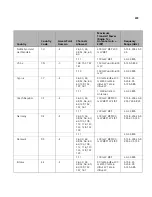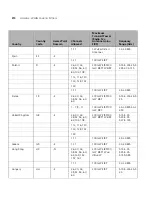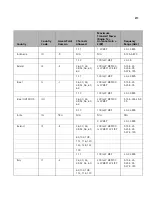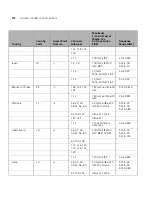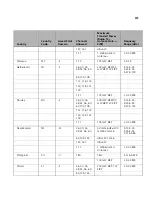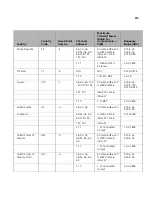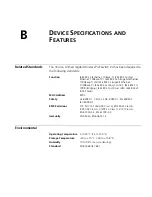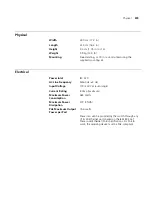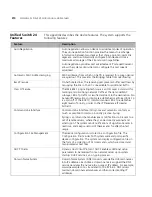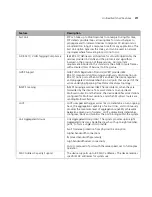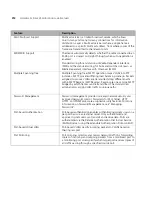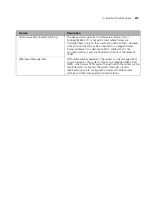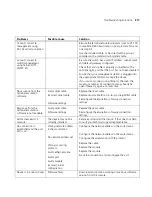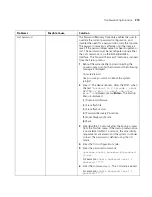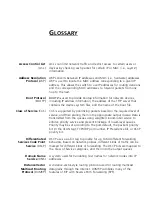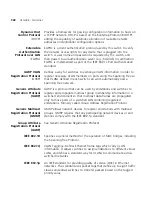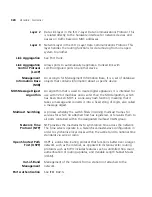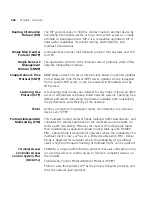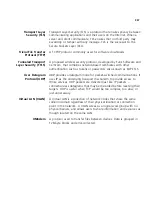
Unified Switch 24 Features
313
Power over Ethernet
Power over Ethernet
(PoE) provide power to devices over existing
LAN cabling, without updating or modifying the network
infrastructure. Power over Ethernet removes the necessity of placing
network devices next to power sources. Power over Ethernet can be
used in the following applications:
IP Phones
Wireless Access Points
IP Gateways
PDAs
Audio and video remote monitoring
Private VLANs
Private VLAN ports are a Layer 2 security feature which provide
isolation between ports within the same Broadcast domain.
RADIUS Clients
RADIUS is a client/server-based protocol. A RADIUS server maintains
a user database, which contains per-user authentication
information, such as user name, password and accounting
information.
Rapid Spanning Tree
Spanning Tree can take 30-60 seconds for each host to decide
whether its ports are actively forwarding traffic. Rapid Spanning
Tree (RSTP) detects uses of network topologies to enable faster
convergence, without creating forwarding loops.
Remote Monitoring
Remote Monitoring
(RMON) is an extension to SNMP, which
provides comprehensive network traffic
monitoring capabilities (as
opposed to SNMP which allows network device
management and
monitoring). RMON is a standard MIB that defines current and
historical MAC-layer statistics and control objects, allowing
real-time information to be captured across the entire network.
Self-Learning MAC Addresses
The device enables automatic MAC address learning from incoming
packets. The MAC addresses are stored in the Bridging Table
SNMP Alarms and Trap Logs
The system logs events with severity codes and timestamps. Events
are sent as SNMP traps to a Trap Recipient List.
SNMP Versions 1, 2 and 3
Simple Network Management Protocol
(SNMP) over the UDP/IP
protocol controls access to the system, a list of community entries is
defined, each of which consists of a community string and its access
privileges. There are 3 levels of SNMP security read-only, read-write
and super. Only a super user can access the community table.
SNTP
The
Simple Network Time Protocol
(SNTP) assures accurate network
Ethernet Switch clock time synchronization up to the millisecond.
Time synchronization is performed by a network SNTP server. Time
sources are established by Stratums. Stratums define the distance
from the reference clock. The higher the stratum (where zero is the
highest), the more accurate the clock.
Feature
Description
Summary of Contents for 3CRUS2475 24
Page 137: ...Defining LAG Membership 137...
Page 139: ...139 Defining Voice VLAN Defining GVRP...
Page 194: ...194 CHAPTER 9 CONFIGURING IP INFORMATION Static Indicates the ARP entry is a static entry...
Page 197: ...Defining ARP Interface Settings 197 Unchecked Maintains the current ARP entries...
Page 321: ...320 APPENDIX C TROUBLESHOOTING...
Page 329: ...328 APPENDIX GLOSSARY...


